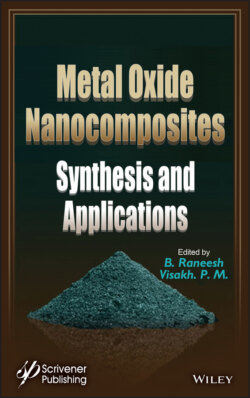Читать книгу Metal Oxide Nanocomposites - Группа авторов - Страница 79
3.3 Reduced Graphene Oxide
ОглавлениеThe structure of graphene oxide (GO) constitutes to hydroxyl and epoxy (1,2-ether) functional moieties present at its basal plane and ketone-rich carbonyl groups at the edges. These functionalities offer reactive sites for the effectual potential of its surface-modification [18]. GO is electrically insulating, and constitutes of irreversible defects due to disruption in the conjugated electronic structure by these functional groups. For this reason, GO is chemically reduced to form reduced GO (rGO) by means of various reducing agents, namely hydrazine, sodium borohydride, etc. which reinstate its conductivity [19]. With the chemical reduction process of transforming GO to rGO, the visual colour changes are observed in which the brown coloured water-dispersed GO turned to the formation of black colour aggregates forming rGO. The reason for the aggregation of rGO attributes to the removal of oxygen atoms; thus, attaining hydrophobic nature [20]. Inline to this, Li and coworkers investigated the synthesis of reduced graphene oxide by employing hydrazine as a reducing agent and regulating the pH of the solution by means of ammonia solution. The aim of regulating pH with ammonia solution resulted in deprotonation of the carboxylic acid functionalities leading to the formation of well-dispersed graphene colloids [21]. Likewise, Athanasios and coworkers investigated the synthesis of reduced graphene oxide by engaging the use of using sodium borohydride [22]. Apart from these, there are other chemical routes employing the use of hydroquinone [23] and strong alkaline stock solutions [24], thermal reduction and solvothermal methods have also been vastly studied. The thermal reduction of GO to form rGO utilizes the thermal treatment (at high temperatures) to eradicate the functional oxide moieties from the surface of GO [25]. Chen and coworkers reported the thermal reduction of GO with the assistance of microwaves and reaction time being only a few minutes. The rGO prepared was effectively soluble in N,N-dimethylacetamide solvent [25]. In the same way, Dubin and coworkers detailed a solvothermal method in their work to yield rGO dispersion. This approach resulted in the deoxygenation of GO yielding rGO layers by refluxing the GO in N-methyl-2-pyrrolidinone (NMP) at 200°C [26].
